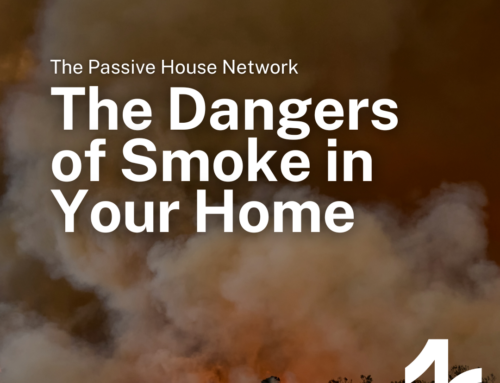Show Me The Money? Get The Building Certified!
Passive House supporters envision a building market transformed: low-energy, zero-carbon, affordable, healthy and resilient. We talk to politicians, regulators, developers and regular people. Bankers are often left out of the discussion, yet bankers have enormous power in shaping the market, perhaps second only to regulation. Bankers can be a barrier, or a catalyst, for Passive House. If we get the bankers on board we’ve cleared a critical path to the transformation we envision.
Bankers might get that a Passive House building can save lots of energy, carbon, and be affordable, healthy, and resilient too. But the banker asks, “Why do you need this extra bit of money from us?” Where are the comps? Who knows what the net operating income will actually be? You say you’re building a Passive House, but are you really? Lenders are risk-averse and they need clear signposts and information they can lend against.
What can you offer lenders to demonstrate financial worthiness? Passive House building certification. Not the idea of certification or the wish for it, but the programmatic commitment to deliver a Passive House certified building.
In a research report led by the Community Preservation Corporation, NYC HPD, Bright Power, and Steven Winter Associates, and newly published by the Building Energy Exchange, titled Multifamily Passive House: Connecting Performance to Financing, a data-driven case is made that Passive House building certification can be a critical link in making deals work for bankers and owners. The report looked at a number of multifamily buildings in New York City and showed that building certification provides differentiating quantitative benefits. Principly:
- On Energy: The certified buildings performed best in energy performance, getting extremely close to intended Passive House energy targets – while the uncertified buildings had a relatively wide variance in energy performance.
- On Carbon: The certified buildings performed best in carbon reduction, not only meeting New York City’s strict 2030 carbon emissions reduction targets but were more likely to hit the ever more demanding 2050 targets as well, avoiding potential penalties.
With more assured performance from certification, the utility cost savings are more reliably predicted providing a basis for greater underwriting of up to $13/SF in extra leveraged debt per this report. And this seemingly modest financial shift can have outsized consequences in being able to green-light projects and close deals.
So here are your calls to action:
Get your buildings certified! We need to close the loop on performance and demonstrate that your project’s development is not just interested in hitting Passive House targets but is committed to it as a core project programmatic objective – that you will deliver on the promises to the public and the lenders. If we rely on “passive house principles” and “inspiration from passive house”, and step back from certification, it is a sign-post that the project is possibly not serious about hitting the performance targets and that perhaps the advertising shouldn’t be trusted. Remember that old commercial where the pharmaceutical spokesperson says “I’m not a doctor but I play one on TV.” …It’s not a very strong position.
Let’s also help the study go forward and grow. They are still collecting data. Do you have a Passive House multifamily building? It can be anywhere, not just in New york. The team compiling the data has a very simple form to fill-out. Please help and fill it out: Open Passive House – A crowdsourced database for multifamily Passive House (cuny.edu)
Don’t Hesitate on Certification. Don’t deny your project team the deep institutional and shared knowledge of the North American Certifiers Circle (NACC). Find a list of 13 NACC member certifiers working in the US here: https://passivehousenetwork.org/wp-content/uploads/2021/02/NACC-brochure-Feb-2021.pdf and more certification resources here: https://passivehousenetwork.org/resources/certification/buildings/
Read the Full Publication Resources. Find all the publication resources on Building Energy Exchange’s website here: https://be-exchange.org/report/multifamily-passive-house-connecting-performance-to-financing/
Let’s Transform the Market
If we’re going to transform the market the bankers need to be on board. For the bankers to be onboard we need performance assurance. Passive House building certification can provide that assurance, that signal, and sign-post. Let’s get the money and build Certified Passive House buildings.




